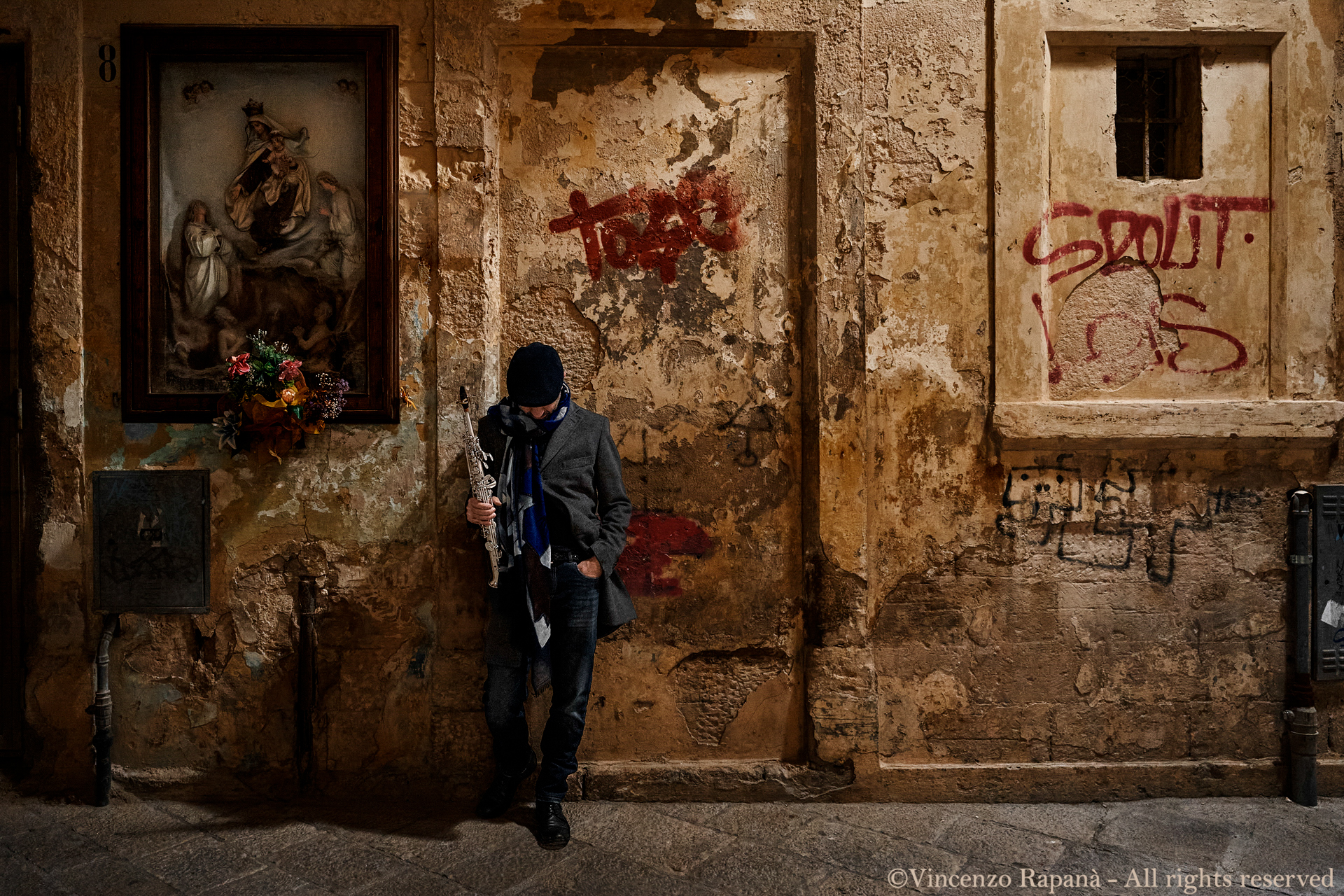Introduction by Marco Albonetti
Amarcord signifies memory, the nostalgic re-enactment of the past. Here, it evokes the idea of joining two instruments, the saxophone and the bandoneón, both of which were invented in the middle of the nineteenth century. The connection is embedded in their history. The bandoneón, created as a more agile substitute for the organ in the world of sacred music in Germany, was brought by German immigrants to Buenos Aires, where it became central to the tango, a music enlivened by rhythmic ideas from Africa and inextricably linked to dance. The saxophone – the central character of an adventure story which originated in Belgium, from which the instrument travelled to America where it discovered its promised land – executes the mellow melodies of the tango with a lightness, a pliancy, and a tone that further intensify the feelings running through them. The bandoneón is afforded some licence to improvise, adding substantial tension before the return of the main themes in the saxophone. Sacred and profane music live together, therefore, in this recording project.
Guest artist on the recording is Daniele di Bonaventura, a composer, arranger, and bandoneón player. He wrote the highly evocative works Sanctus, Corale, and Graduale, which were inspired by the liturgical world of Germany, birthplace of the bandoneón. These pieces alternate with tangos, outlining a seamless history. Daniele also arranged the tangos from the Argentine tradition by the composers Villoldo and Gardel for saxophone, bandoneón, and strings.
Amarcord d’un Tango was created to offer the listener a brief journey through the history of the tango. Composed in 1903, Villoldo’s El Choclo is one of the oldest examples of the genre. The well-known melodic tangos Por una Cabeza and Sus Ojos se Cerraron are by the great singer Carlos Gardel, who died tragically in a plane accident, in 1935. I include a homage to Astor Piazzolla, on the thirtieth anniversary of his death. The album opens with his Triunfal, the piece that, thanks to Nadia Boulanger, created awareness and spurred the metamorphosis of Piazzolla’s ‘nuevo tango’. It represents the ideal point of embarkation for this journey, which moves from a traditional place to traverse soundscapes, visual suggestions, and different emotions. We perform two additional, rare compositions by Piazzolla as a duo. Composed in 1975, Bruno et Sarah and Jardin d’Afrique are real gems that were included in the soundtrack of Le Voyage de Noces, a film by Nadine Trintignant. Alfonsina y el Mar, the popular Zamba by the Argentine Ariel Ramírez, affords a moment of improvisation, a sort of emancipation, after the prayer of Sanctus. Finally, also represented are contemporary composers. Richard Galliano, a great virtuoso of the modern accordion, sent me this version of Tango pour Claude for strings, to which I added piano and bandoneón. Jorge Bosso composed the enigmatic Tango’s Gedanke specially for this album.
The orchestration of the pieces in this recording project was meant to move the sound of the chamber orchestra – in our case eight violins, two violas, two cellos, and a double-bass – closer to that of the tango orchestra of the Golden Age of the 1950s. Of the above mentioned Triunfal, I have made a transcription based on a rare arrangement from 1953, which the Argentine composer wrote for the great Maestro of Tango Anibal Troilo and his orchestra. As is the tradition, all the pieces are performed without a conductor.
Daniele di Bonaventura recorded the works on this album on a 1928 ‘Premiere’ bandoneón, an Argentine model with 142 tones. The sound is produced by the simultaneous vibration of two metal reeds tuned a perfect octave apart, with pressure exerted by air flow. In order to approach more closely the expression of the bandoneón (in terms of emission, sound, and articulation) I used synthetic reeds and adopted a staccato as ‘airy’ as possible, thus conferring on the sound a unique ‘dirty’ and nostalgic effect, an echo of past times and styles. The diatonic bandoneón is not an instrument with perfectly balanced tuning; I therefore decided to exploit this characteristic to my advantage, taking the intonation as a crucial timbral factor for the colour of the sound, especially in the traditional pieces.
This journey into the sounds of the past has touched me deeply and I hope it will grip you as well.
